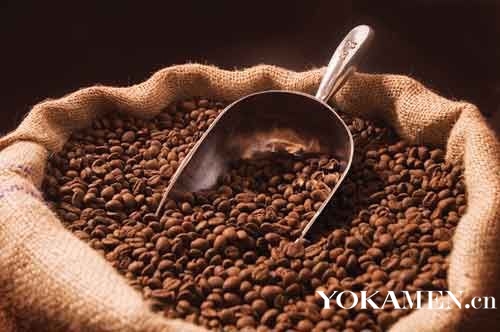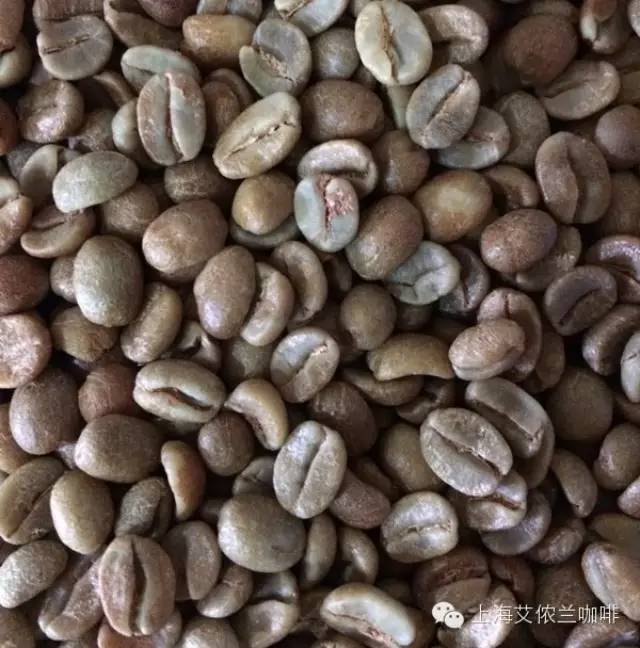World Coffee Manor: an Analysis of the species and Origin of Coffee Bean in each Common Coffee Bean
If you want to have an in-depth understanding of coffee culture, you should start from the root of coffee, that is, coffee beans and their origin, different types and regions will give birth to different characteristics of coffee beans, and the editor will learn coffee knowledge and be a coffee expert.
The earliest Arab way to eat coffee was to chew the whole fruit (Coffee Cherry) to absorb its juice. They then mixed the ground coffee beans with animal fat as a physical supplement for long trips, and it was not until about 1000 AD that the green coffee beans were boiled in boiling water to make an aromatic drink. Three centuries later, the Arabs began to bake and grind coffee beans. Because alcohol was forbidden in the Koran, Arabs consumed a lot of coffee, so religion was actually a big factor in the popularity of coffee in the Arab world.
Coffee trees are very similar to laurel trees. They usually grow in the area between the Tropic of Cancer and the Tropic of Cancer. It takes three to four years for a coffee tree to begin to bear fruit. Coffee beans are contained in these fruits and come out of their shells after drying and beating.
Analysis of the types and producing areas of coffee beans
There are usually two kinds of coffee beans in the world, Arabica (Arabica) and Rob's specialty (Robusta).
Arabica, also known as high-altitude coffee or small fruit coffee, which grows at high altitudes (more than 1500 meters) is the most traditional variety of Arabica coffee. Originally from East Africa, coffee was monopolized by the Arab world for a long time before the 15th century, so it was called "Arabian coffee" by Europeans. Arabica coffee beans account for about 75% of the world's coffee bean production and are grown in all regions. This kind of coffee is not resistant to diseases and insect pests, and its growth conditions are relatively strict, but its taste and caffeine content are better than those of Robert's, and its price is higher than that of Robert's. The world's more famous coffee brands purchase Arabica beans as the main source of coffee beans.
Arabica was the only kind of coffee beans, then in the 19th century, there was a large area of diseases and insect pests, coffee growers began to look for other varieties of coffee resistant to diseases and insect pests, so Rob's special was discovered and began to be planted artificially. Robert's special growth in low-altitude areas, characterized by resistance to diseases and insect pests, cold, drought resistance, a word to describe, "thick", but the taste is relatively bitter, caffeine content is also high, twice as high as Arabica, so the price is also on the low side. Robert is the main buyer for most instant coffee companies.
Brazil is the largest exporter of coffee beans in the world, followed by Colombia. These two Central and South American countries account for more than half of the world's coffee production, and the quality is stable. Vietnam has developed rapidly in recent years and has become the second largest coffee exporter in the world. Other countries and producing areas, such as Indonesia, Ethiopia, Guatemala, Jamaica and Kenya, are also famous coffee producers.
It should be mentioned that China's Yunnan and Hainan also produce coffee beans, but due to the innate conditions of soil and climate, coupled with technical and management factors, China's coffee beans have been "neglected". However, in late 2008, Starbucks first launched the Starbucks Fengwu Xiangyun, which contains Yunnan coffee beans, to celebrate the 10th anniversary of Starbucks' entry into the Chinese market. Although the coffee beans are only mixed with 10% of Yunnan coffee beans, it is a big and meaningful thing for China's coffee industry to be on the list of the world's largest coffee manufacturers and retailers.
The five best types of coffee beans:
1. East Timor Arabica coffee beans
Arabica coffee beans, mellow, have a certain fruity aroma, drink to the mouth when there is a certain irritation, the entrance has a mixed smell, after grinding there is a dry fragrance.
two。 Indonesia Mantenin coffee beans
Mantenin coffee beans taste strong, have a certain sweetness, can be drunk alone, can be mixed, the characteristic of this bean is that the older the better, the color will change after a long time, the most famous is the golden manning.
3. Ethiopian lima coffee beans
According to the origin, Ethiopian lima coffee beans have fruity flavor, slightly sour, clean and fragrant taste, and are more suitable for drinking alone.
4. Peruvian coffee beans
Peruvian coffee beans have a clean taste, no impurities, it is mostly grown in high-altitude areas, planned planting greatly increases the yield, mellow taste and proper acidity.
5. Ethiopian Harald coffee beans
Harald coffee has a mellow taste, moderate or mild acidity and, most importantly, almost the lowest caffeine content. The taste is aggressive and ready to defeat your taste buds, and the drier the processing, the more advantageous it is.
Source: happy living
Important Notice :
前街咖啡 FrontStreet Coffee has moved to new addredd:
FrontStreet Coffee Address: 315,Donghua East Road,GuangZhou
Tel:020 38364473
- Prev

World Coffee Manor: Elsa Coffee Manor the way to Costa Rican Coffee
At the COE boutique coffee competition in Costa Rica in early May, two raw coffee beans from Elsa Coffee Manor won the prize. Anyone familiar with coffee knows that COE is the most famous boutique coffee competition in the world, and the honor of coffee beans means that they can be sold at international online auctions for several times or even tens of times higher than the price of ordinary raw beans. Costa Rican coffee boutique
- Next

World Coffee Manor: a detailed introduction to the treatment of Coffee beans with Red Wine at Carmen Manor in Panama
New product in September: Panamanian Carmen Chateau red wine treats coffee beans. I love coffee not because of how delicious it is, but because the smell is so fascinating. I always thought that the greatest charm of coffee was the aroma of coffee. It was not until I came to work here that it subverted my perception of coffee.
Related
- Does Rose Summer choose Blue, Green or Red? Detailed explanation of Rose Summer Coffee plots and Classification in Panamanian Jade Manor
- What is the difference between the origin, producing area, processing plant, cooperative and manor of coffee beans?
- How fine does the espresso powder fit? how to grind the espresso?
- Sca coffee roasting degree color card coffee roasting degree 8 roasting color values what do you mean?
- The practice of lattes: how to make lattes at home
- Introduction to Indonesian Fine Coffee beans-- Java Coffee producing area of Indonesian Arabica Coffee
- How much will the flavor of light and medium roasted rose summer be expressed? What baking level is rose summer suitable for?
- Introduction to the characteristics of washing, sun-drying or wet-planing coffee commonly used in Mantenin, Indonesia
- Price characteristics of Arabica Coffee Bean Starbucks introduction to Manning Coffee Bean Taste producing area Variety Manor
- What is the authentic Yega flavor? What are the flavor characteristics of the really excellent Yejasuffi coffee beans?

